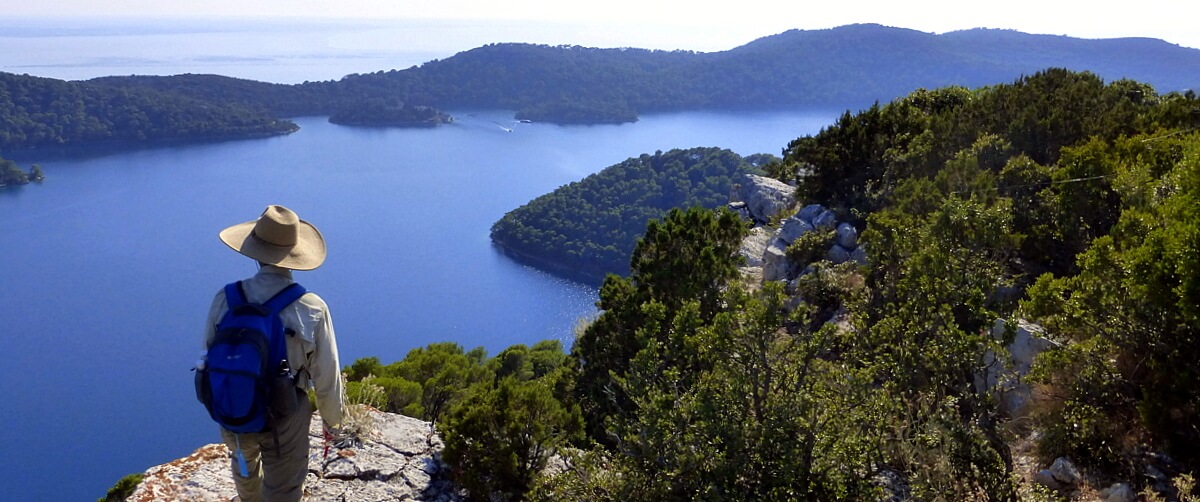My first full day in Sri Lanka was loaded with color and culture. Peter is my driver and Prasantha is my guide, at least for the first 8 days. The trip was originally going to be about 2 weeks, but I decided to add another week to allow leeway to explore a greater breadth of this small island nation about the size of West Virginia. So I look forward to getting to know Prasantha quite well as my “trekking guide” for the next 8 days, but Peter and I will practically be best buds by the time we finish 3 weeks together!
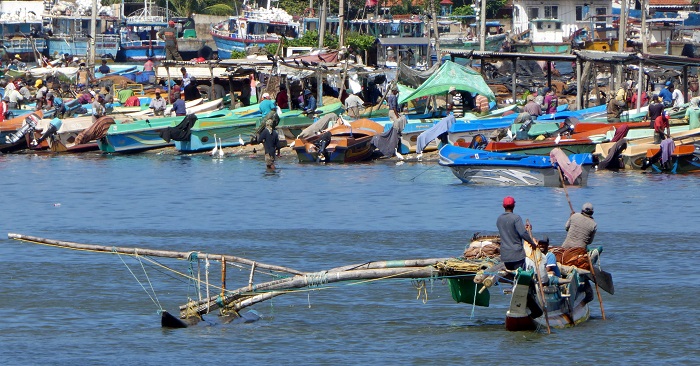
This duo is a metaphor for Sri Lanka, and a doorway for me to the many surprises that I’m looking forward to encountering. I say that because both men are linked to the Portuguese traders and mariners who changed the course of history by opening up sea routes to the rich spice markets of the East. Prasantha’s surname is de Alwis. Peter’s surname is Rosario. Prasantha is Buddhist and is in appearance more Sinhalese, the majority race of Sri Lanka. Peter is a Burgher, a small Eurasian ethnic group that is a mix of European ethnic groups who colonized the islands from the 1500s onwards – Portuguese, Dutch, and British. Like many Burghers, Peter is proudly Roman Catholic in a country that I preconceived was almost exclusively Buddhist and Hindu.
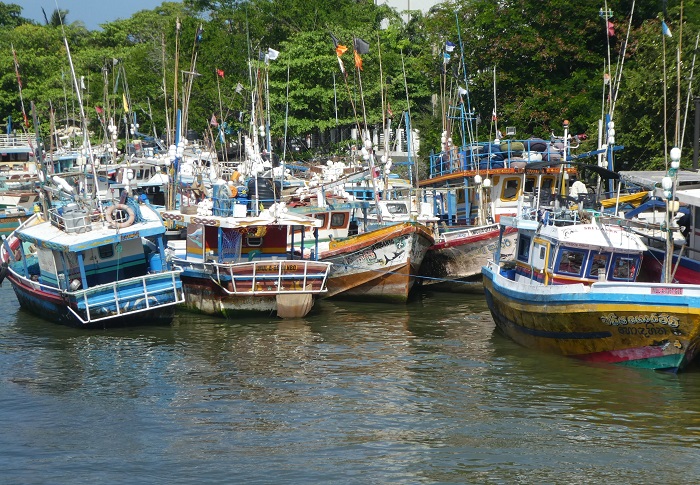
We started the day by driving around the area of Negombo (north of the capital of Colombo) to preview hotel alternatives to the wonderfully exclusive hotel I stayed in on the first night. I’d read about the colorful fishing fleet, and we stopped to photograph a sampling of the boats that were docked higgledy-piggledy along the lagoon after two weeks at sea. Prasantha pointed out the holds where ice was kept – the old fashioned way to keep the fish fresh.
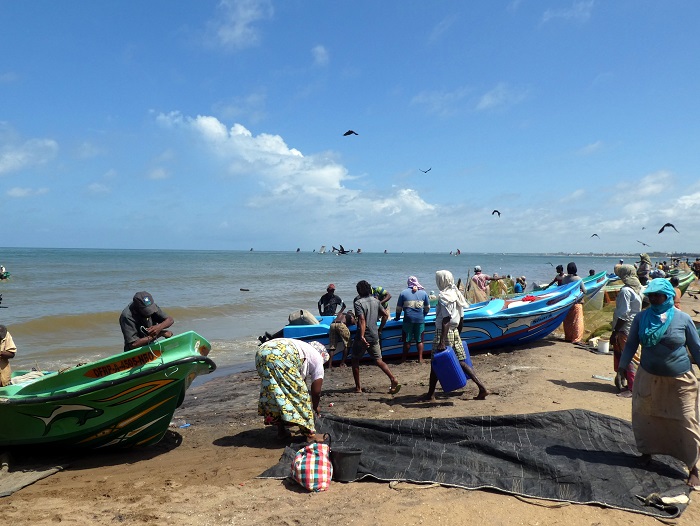
The hotels we visited were interesting, but the second cultural stop at the fish market was fascinating. I’ve visited a host of fish markets around the globe, but I don’t remember one as lively and captivating as this one. What made it unique was the activity of the fishermen themselves working just above the surf line on the beach behind the market. They’d been out fishing all night and many were still clearing their nets of the catch. Whitebait is a tiny little fish many were shaking out of their nets. Other larger species were being filleted and salted, then laid out on tarps in the sun to dry. This protein-rich product was destined for the inland population – a cheap way to get fish into the towns and villages of the interior without the aid of refrigeration. Prasantha told me they would last 3 months after being salted and dried in this manner.
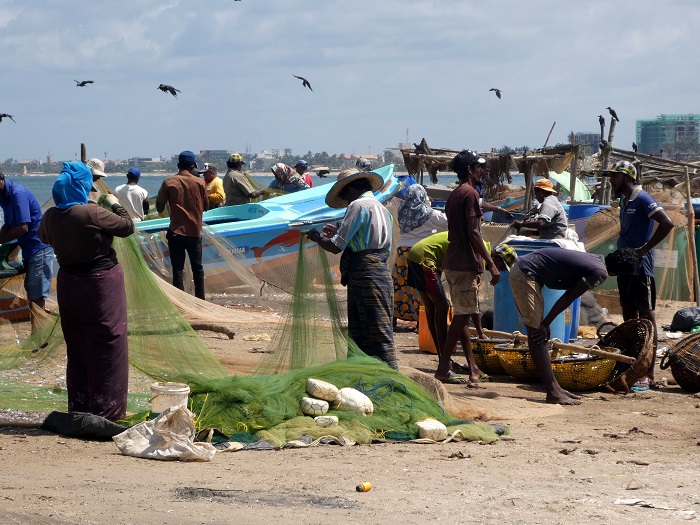
As we left the Negombo area for our destination in the North Central Province, and today’s walk planning, we drove a 2-lane highway through miles and miles of towns and villages, the road lined with shops and farms and activity. I was surprised to learn how many Christians live along the coast. And I saw an equal number of Muslims, more distinctive because of their religiously oriented attire. Apparently Christians number about 8% of the population and Muslims somewhere around 10%.
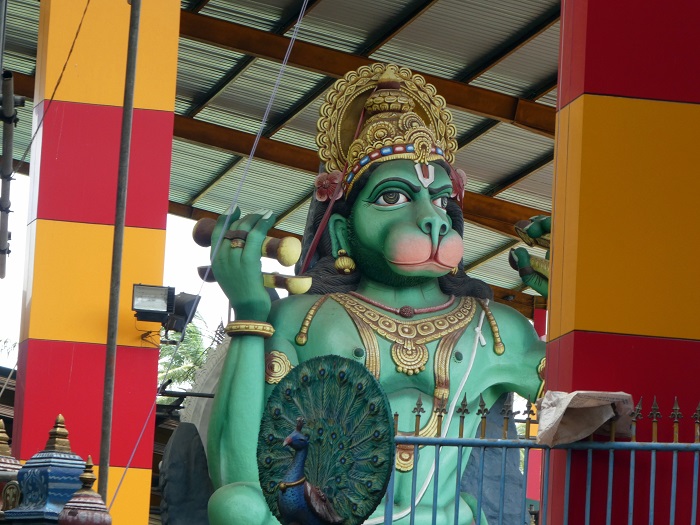
Buddhist Sri Lankans are the overwhelming majority at over 65%, but within this 2 hour drive along the coast, Christian churches were prominent;
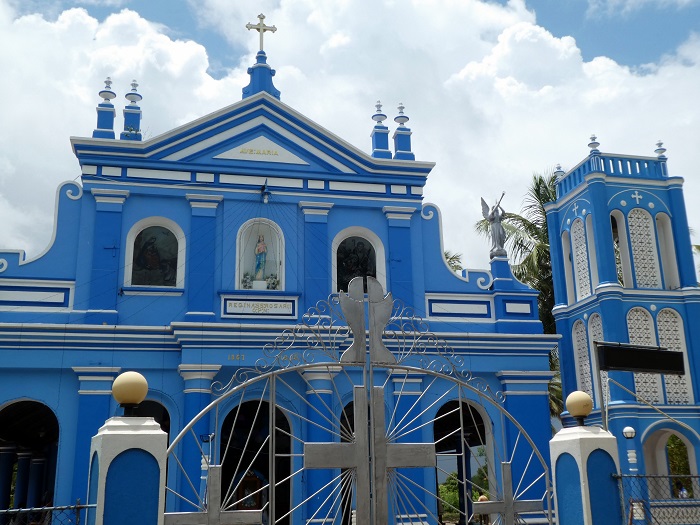
Muslim mosques were less prominent but the religion was more than conspicuous because of the dress. And within a space of less than a mile, it was not uncommon to pass a Christian church, a Muslim mosque, a Buddhist temple, and a Hindu temple.
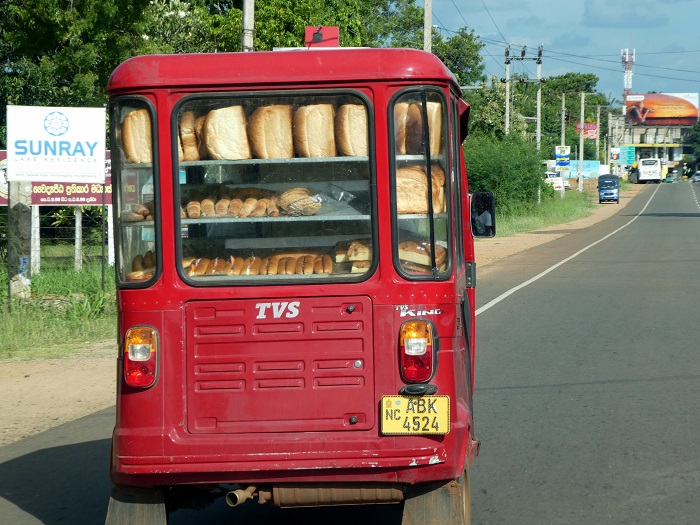
Peter was a maestro of the vehicular waltz, weaving in and around the various forms of vehicles and pedestrians. Tuk tuks are the 3 wheeled scooters ubiquitous throughout southern and southeast Asia. They seem to carry 90% of the population and goods on the roads of this part of the world and scoot around the streets of Sri Lanka like colorful waterbugs.
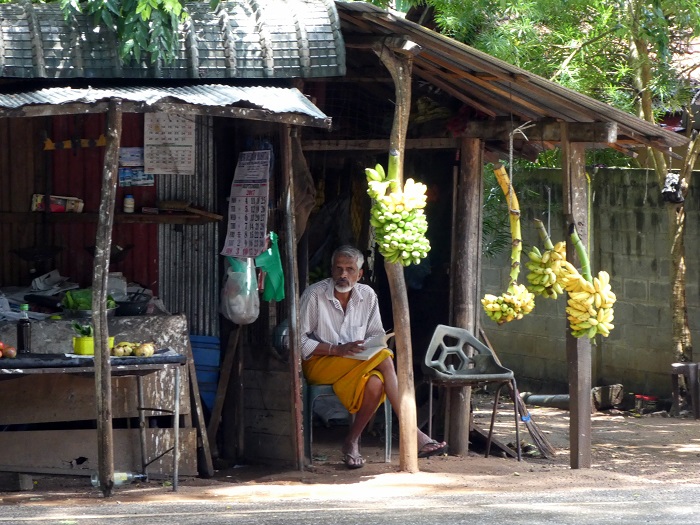
Motorcycles are everywhere. Pedestrians show no fear in stepping into the flow and hopscotching their way from line to line of traffic. Peter artfully followed the custom of converting a two-lane to three of four lanes, motor scooters passing tuk tuks and Peter passing the motor scooters.
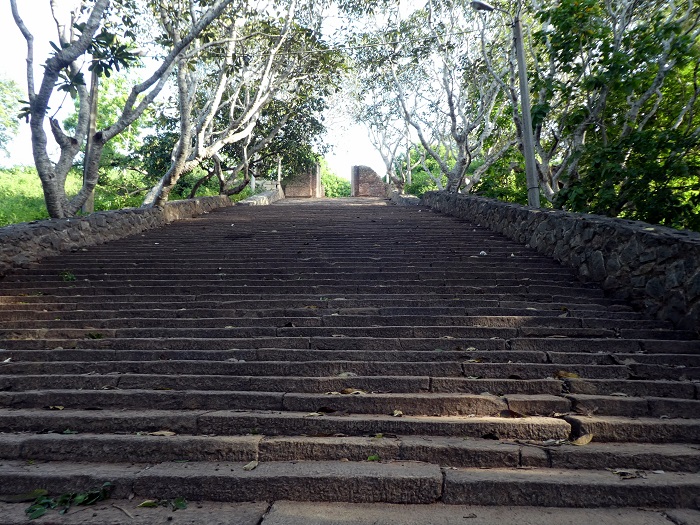
We arrive late in the afternoon at Mihinthale, the place in Sri Lanka where Buddhism was first introduced from Indian. There is, of course, a rather dramatic legend that accompanies the event. And our walk route ascended an interminable number of steps to a site that felt as dramatic and the legend sounded. The complicating factor, however, was the need to go barefoot, a common requirement at Buddhist sites with which I’d become painfully familiar on our recent Myanmar trip.
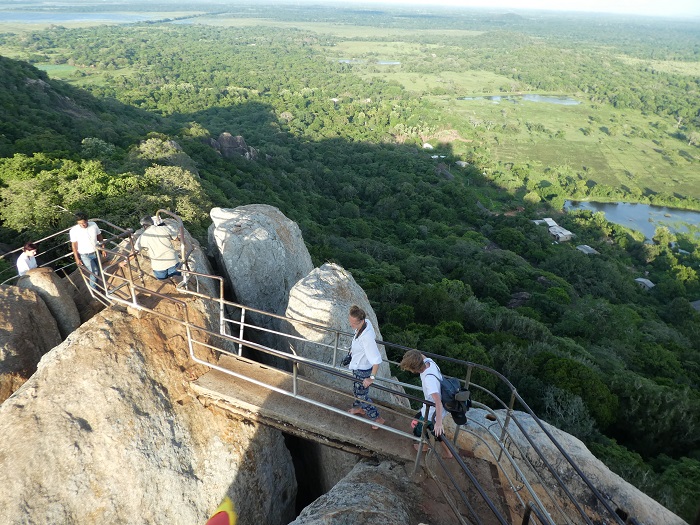
Prasantha was an engaging guide, sharing stories and an interest in nature, birds in particular. At the apex of our trek, we ascended to the aerie where the Buddhist missionary has assailed the local king while he was hunting. After tenderfooting my way up the granite steps, never releasing my leech-like grip of the metal hand railing, hoisting myself over a ledge of about 3 feet, I reached the top, and the views were spectacular. I also reached the conclusion that we would not be including this particular part of the trail in our program.
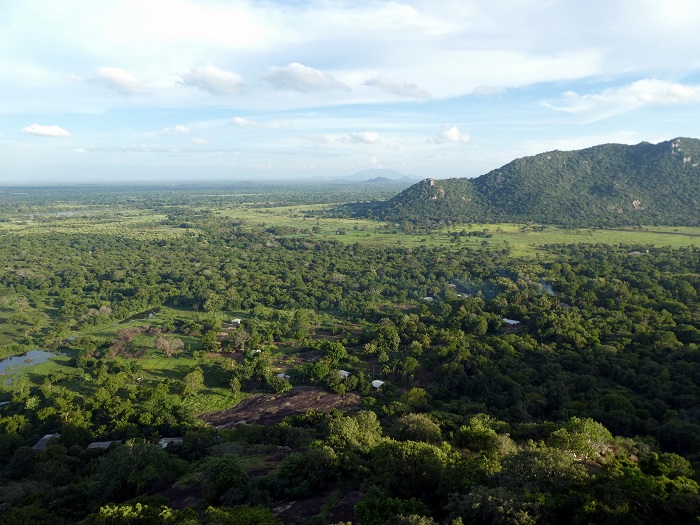
The day ended with a detour offered by Prasantha to the Cobra Tank (pond), an out of the way trail we had completely to ourselves, with the exception of a conclave of Macaca monkeys engaged in a serious-looking conference on the edge of the pond. Wow, if every day in Sri Lanka is like this, my sensory overload meter will be perpetually in the red zone!
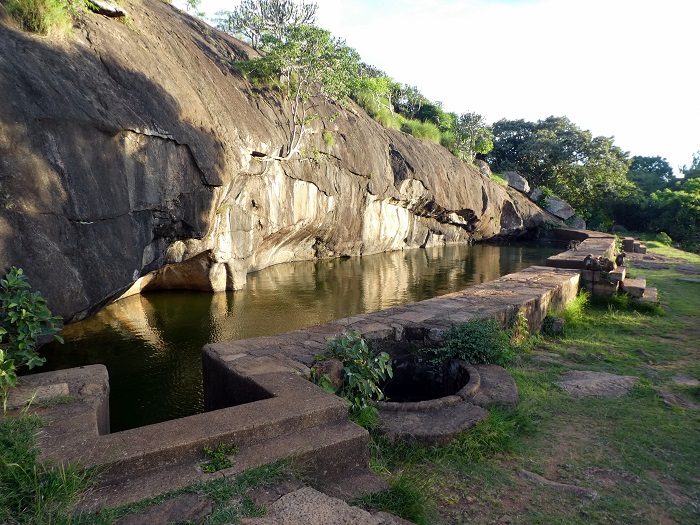
Check out the tour page for Wonders of Sri Lanka 2019.[/vc_column_text][/vc_column][/vc_row][vc_row][vc_column][vc_gallery interval=”0″ images=”10728,10729,10730,10731,10732,10734,10735,10736,10737,10738,10739,10740,10741,10742″ img_size=”large”][/vc_column][/vc_row]

